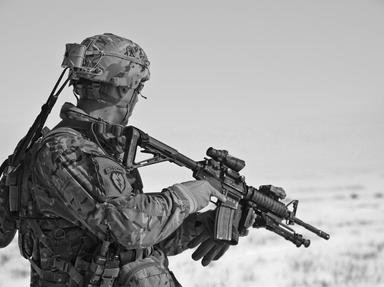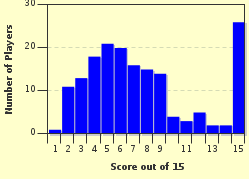Quiz Answer Key and Fun Facts
1. What weapons are commonly referred to as "small arms", according to NATO?
2. What type of action is generally employed in machine guns?
3. What part of a firearm holds the hammer back under spring tension in the cocked position?
4. On a .50 M2HB QCB, what causes the extractor to rise up into position behind the next round to be chambered (forward travel)?
5. What part helps slow rearward movement of the bolt in most semi-automatic and automatic rifles?
6. What is done to a chamber to assist in primary extraction?
7. Why do American soldiers often try to trade their M-16 barrels for Canadian C-7 barrels?
8. What type of firing mechanism is used in small calibre weapons, where a gas-assist system is not possible?
9. How many phases are there to a complete cycle of operation?
10. What is a mechanical safety?
11. What is headspace?
12. What can result from firing a weapon with excessive headspace?
13. If your firing pin protrudes a little too much, what can happen?
14. What prevents the hot gasses from the burning propellant from escaping from the rear of the chamber instead of pushing the projectile down the barrel?
15. Is a silencer the same as a supressor?
Source: Author
delgriffith
This quiz was reviewed by FunTrivia editor
trident before going online.
Any errors found in FunTrivia content are routinely corrected through our feedback system.

